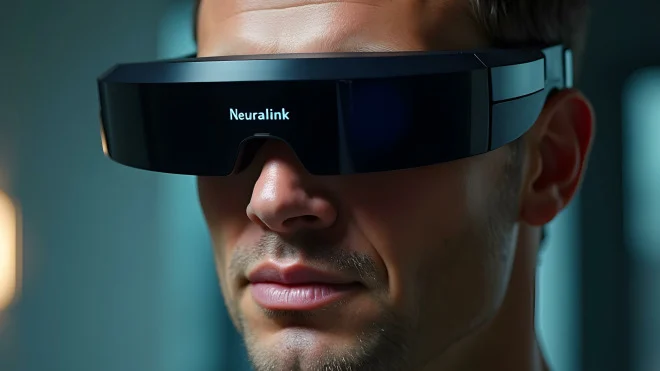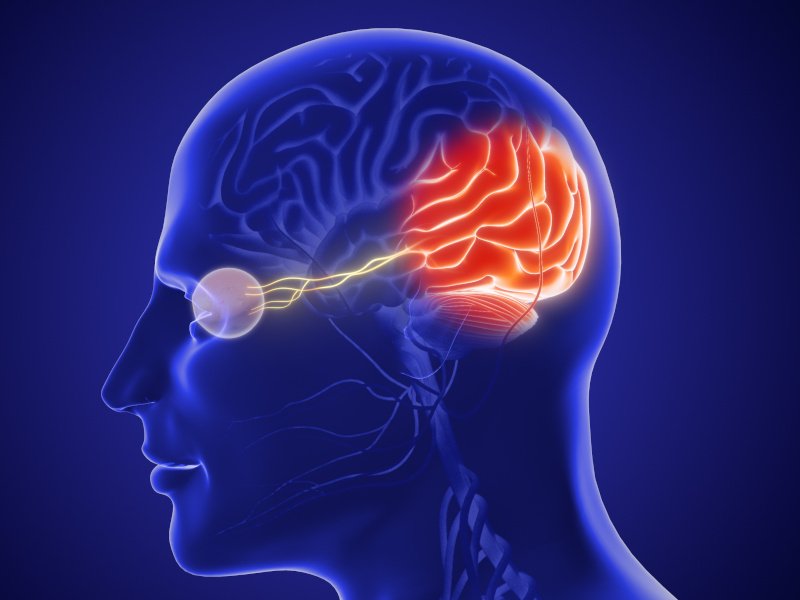With two separate “breakthrough” developments that are both poised to revolutionize the world of ophthalmology, the world could soon change for people who are visually impaired or even born blind.
Earlier this year we posted an article featuring “Acoustic-Touch” smart glasses that use spatial sounds to help the blind or vision impaired navigate around obstacles. In this post, we’re going to look at two separate “breakthrough” developments that are both poised to revolutionize the world of ophthalmology.
In one of his most iconic performances till date, American comedian and actor Chris Rock famously called out the medical industry by pointing out that with all the money in the world, Stevie Wonder still can’t see and Superman still can’t walk. That performance by Chris Rock was in 2001, Christopher Reeve passed away in 2004 (sadly still paralyzed from the waist down), and as of November 2024, there is still no cure for people who are born blind (like Stevie Wonder).
Neuralink Blindsight
That may all change, however, if Elon Musk has his way. According to a recent post, a new device called Blindsight by Neuralink may be able to restore sight in people who have lost both eyes and optic nerves, as well as in people who are born blind. In fact, the US Food and Drug Administration (FDA) has designated this device with a “breakthrough device” status, signifying its potential to literally change the world for blind people.
This designation is aimed at speeding up the process of fine-tuning and testing medical breakthroughs that could improve the lives of patients with debilitating or life-threatening conditions. The device works via a microelectrode array implant in the visual cortex area of the brain that then activates neurons which in turn form an image in the brain.
According to Elon Musk’s post on X, he says that while the breakthrough is 100% going to happen, it’s going to be pretty low resolution at first, a lot like the initial stages of video game graphics (like vintage Atari, Nintendo and Sega games). He also points out that his device would eventually give users almost “superhuman” sight with the ability to see even infrared, ultraviolet, and radar wavelengths that no other human can see with the naked eye.
What makes Blindsight different is that unlike other innovative retinal implants that send signals from a camera to electrodes that go directly to retinal nerves, Blindsight is a brain implant that goes directly in the visual cortex area of the brain. That’s why unlike retinal implants which don’t work on people who are born blind, Blindsight will.
Gennaris Bionic Eye
Another breakthrough innovation that bypasses damaged optic nerves and sends signals directly to the brain’s “vision center” is the Gennaris Bionic Eye, a culmination of over a decade of research and development. Also referred to as the “Gennaris Bionic Vision System,” this bionic eye has been developed by researchers at the Monash University of Australia, in collaboration with Alfred Health. The Gennaris Bionic Eye consists of a powerful mini-camera that’s mounted on custom headgear that records your surroundings and transmits it to a wireless brain implant.
Unlike Neuralink Blindsight that works on a microelectrode array implant, the Gennaris Bionic Eye uses multiple (up to 11) tiny (9mm) implants that can be positioned on the brain’s surface in order to stimulate particular parts of the brain.
When placed on the visual cortex, these implants allow the user to see and distinguish between basic shapes and outlines in order to navigate around obstacles. Additionally, while previous flat sensor technologies offer a 70 degree field of view, the Gennaris Bionic Eye, in an effort to mimic the human eye’s natural structure (and 130 degree field of view), offers a 100 degree field of view.
There is also an onboard visual processing unit as well as state-of-the-art nanowires which are much more responsive and able to process and transmit images in real-time without any lag. After over a decade of research and successful trials on animals like sheep with minimum negative effects, the Gennaris Bionic Eye is about to start human trials in Melbourne, Australia.
Solving both problems
What’s interesting about Neuralink is that it seems to simultaneously be trying to solve both problems that Chris Rock called the medical community out about in his iconic performance. In addition to helping people like Stevie Wonder see again, Neuralink is also simultaneously working on brain and spinal implants that can help people like Christopher Reeve (Superman) walk again. They have also had a lot of success with helping paraplegics control computers with just their mind but we’ll save that for another post. In conclusion, we can only hope that technology improves to a point where people who are born blind and have never seen the world as we do can someday gain their vision, even if the graphics are a bit old-school at first.
In case you missed:
- AI-powered smart devices for the hearing, vision, and speech-impaired
- Lab-Grown Brain Thinks It’s a Butterfly: Proof We’re in a Simulation?
- Could Contact Lenses be the Key to Fully Wearable BCIs?
- This computer uses human brain cells and runs on Dopamine!
- Could the Future of Communication Be Holographic?
- Mainstream AI workloads too resource-hungry? Try Hala Point, Intel’s largest Neuromorphic computer
- These AI powered devices add smells to virtual worlds
- Having two left thumbs may no longer be a bad thing
- Omnidirectional VR treadmills, go anywhere without going anywhere!
- Scientists gave a mushroom robotic legs and the results may frighten you











